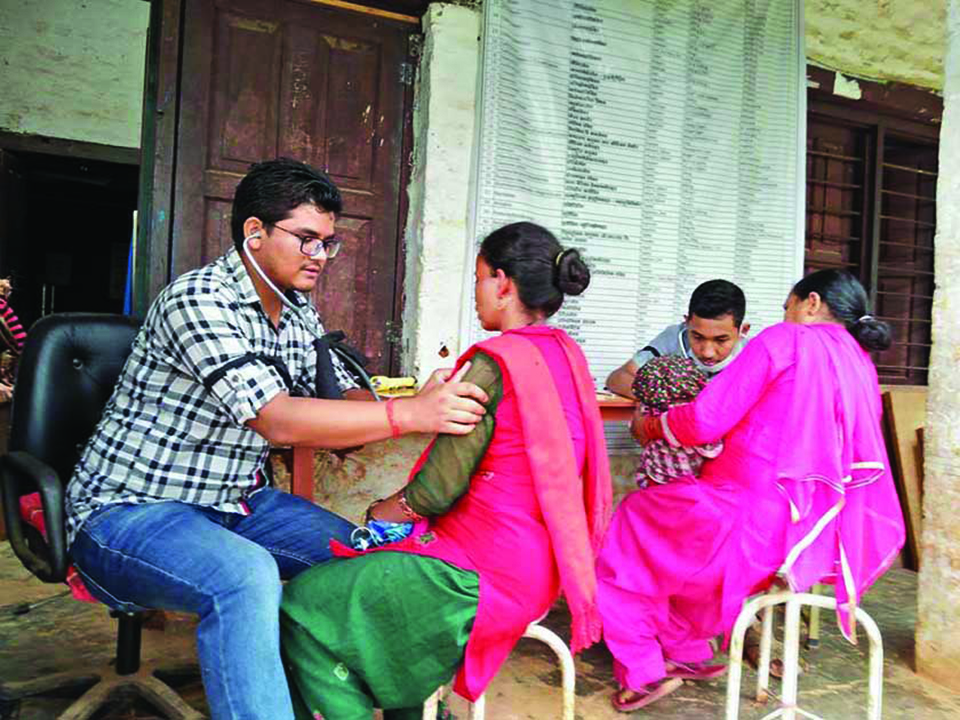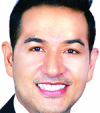
OR


Dr Jimmy Kayastha
The author is an oral and maxillofacial surgeon trained in the US and contributes his expertise to the healthcare realm in Nepal.news@myrepublica.com
Until we are able to shift focus from patient satisfaction to patient safety, healthcare workers will continue to rearrange deck chairs on the Titanic
The day my mother was diagnosed with advanced cancer was the day I began my long run as a patient. The unwelcome news upended my life and sucked all my energies into an immediate and fierce fight for her survival. As I struggled to regain my equilibrium, this nugget coined by eminent scholar W Edwards Deming caught my attention: “In God we trust, all others must bring data.” So I set about to gather all the “data” I could.
I scoured medical journals, consulted widely and internationally and obtained numerous medical and surgical opinions. It was a gargantuan effort. It was a battle like no other. A battle with cancer that, on average, extinguishes its victims in two to three years. I am beyond grateful to be by my mother’s side. We’ve been the fortunate recipient of care by a world-class team of doctors, but in the context of this piece, one healthcare systems stands out.
Failing on care
Nepal’s healthcare system has more than its fair share of dysfunction. I have been a patient and a doctor and have seen care from both sides. Believe me everyone that goes into healthcare really means well. I mean truly. But we who work in it are also unwitting agents of the system that so often does not serve. Why? There is a pretty easy answer to that question and it explains a lot. Healthcare was designed with diseases, not people at its center. Which is to say it was badly designed. And nowhere are the effects of bad design more heartbreaking or the opportunity for a good design more compelling than in a developing nation like Nepal.
My purpose today is to reach out across disciplines and invite design thinking into this big conversation. To bring intention and creativity to the experience of suffering in general. Nepal has a monumental opportunity ahead before it becomes a universal issue. On the systems side, so much of suffering is unnecessary. But this brand of suffering in Nepal’s healthcare system is made up and we can change it. My objective is to make Nepal’s healthcare system sensitive to this fundamental distinction between necessary and unnecessary suffering. The hospitals in Nepal tend to assault our senses and the most we might hope for within those walls is numbness. Anesthetic not aesthetic.
Working in the US healthcare system for over a decade, and having been trained at some of America’s best hospitals, I have had the opportunity to learn from an impressive number of amazing clinicians. I am repulsed by healthcare system in Nepal. I feel that patients’ lives have been cut off. Nepal is nowhere ready to prepare for this silver tsunami. We need an infrastructure dynamic to handle these seismic infills within our population. Now is the time to create something new, something vital. The key ingredients are policies, education and training, systems, bricks and motor.
We have ton of inputs for designer of all hues to work with. Little details are not little. We have to provide sustenance on several levels. We have to value patients’ rights, prioritize change and be forthcoming with patient alternatives. We have to treat one another as humans not doctor and patients. Rather than practicing what our medical training has trained us, we need to focus not on disease centered care but patient centered / human-centered model of care. Allopathic reductionism which most of us are trained in manages and treats chronic diseases, but does not look for a cause or cure.
Have your say
While we don’t take vows within our doctor-patient relationships, they are still significant partnerships—in sickness and in health. As you evaluate your relationship with your current doctor, pay attention to the fact that your opinions are welcome and that their ego is not getting in the way. Make sure your alternative treatments are being addressed. Find someone more engaging and draw the line if your personalities don’t mesh. Ordering tests without an explanation can be an acceptable answer from a parent to a child, but not from a doctor to a patient. Until we are able to shift the focus from patient satisfaction to patient safety, healthcare workers will continue to rearrange deck chairs on the Titanic.
Many of us—I’m holding a giant mirror up to members of my own profession—have a bothersome tendency to present our perspectives like a male turkey displaying his snood: arrogant, swaggering, self-important. Given our overstuffed education, some propensity for hubris is perhaps understandable (albeit no less forgivable). But a few labor so hard, so intensively and for so long to acquire vast stores of specialized knowledge and experience. Like most, I employ that expertise daily to generate a stream of considered opinions in the process of plotting the best care for my patients.
I am not trying to elicit sympathy. My scribbling serves instead as an admonition to all of us, doctors and non-doctors alike, to be circumspect in our opinions and to employ care in our delivery, to be perpetually open to correction and dissent and to be humble, above all.
The author is a dentist practicing in
San Francisco, California
You May Like This

Mugu's health post operating without health workers
MUGU, Jan 10: Absence of health workers at a local health post of western Khatyad Rural Municipality-10, Hyanglung of Mugu has... Read More...

Health of health
There is mismatch between Nepal’s commitment to communicable diseases and rapid spread of non-communicable diseases ... Read More...





Just In
- CM Kandel requests Finance Minister Pun to put Karnali province in priority in upcoming budget
- Australia reduces TR visa age limit and duration as it implements stricter regulations for foreign students
- Govt aims to surpass Rs 10 trillion GDP mark in next five years
- Govt appoints 77 Liaison Officers for mountain climbing management for spring season
- EC decides to permit public vehicles to operate freely on day of by-election
- Fugitive arrested after 26 years
- Indian Potash Ltd secures contract to bring 30,000 tons of urea within 107 days
- CAN adds four players to squad for T20 series against West Indies 'A'













Leave A Comment